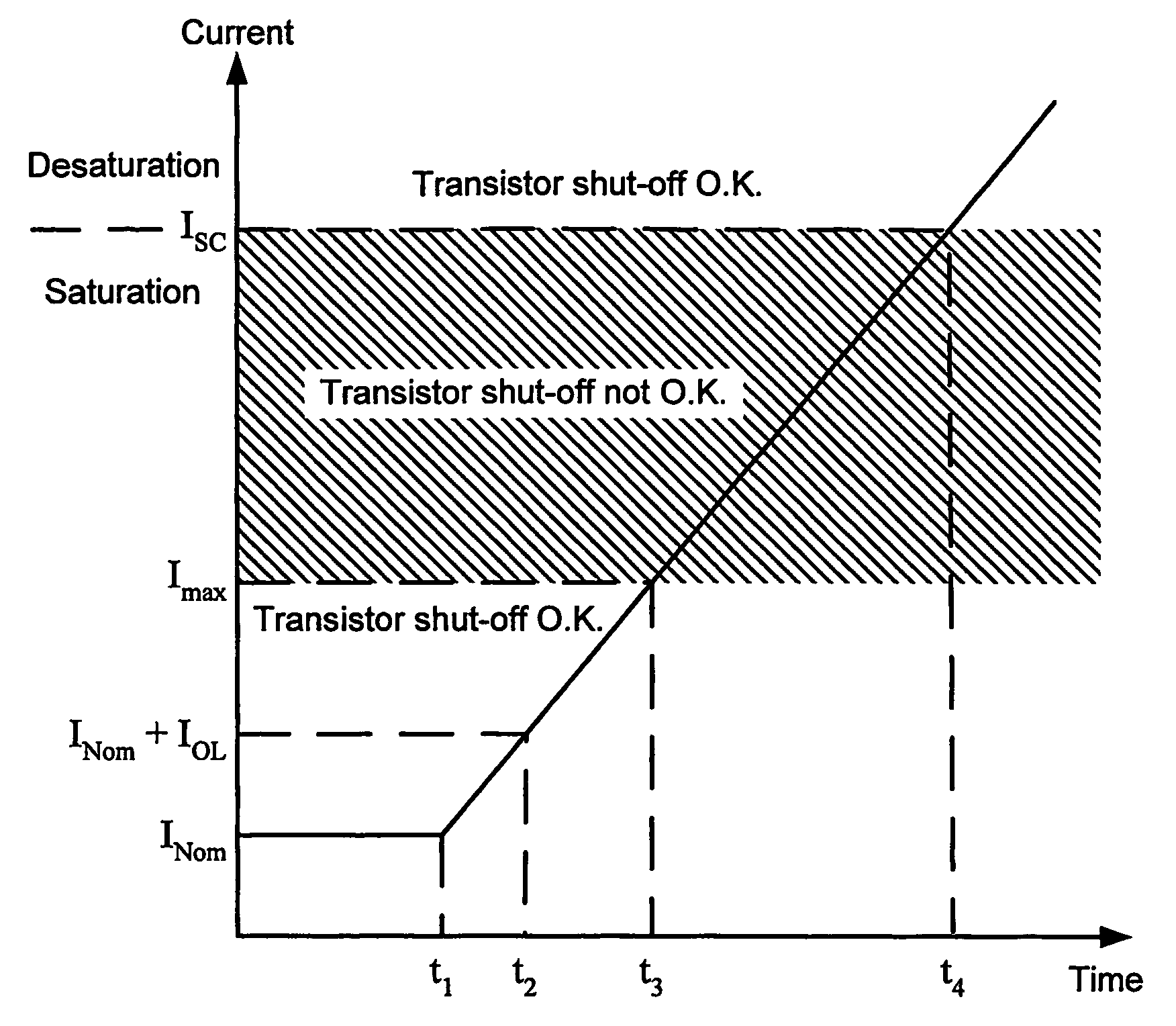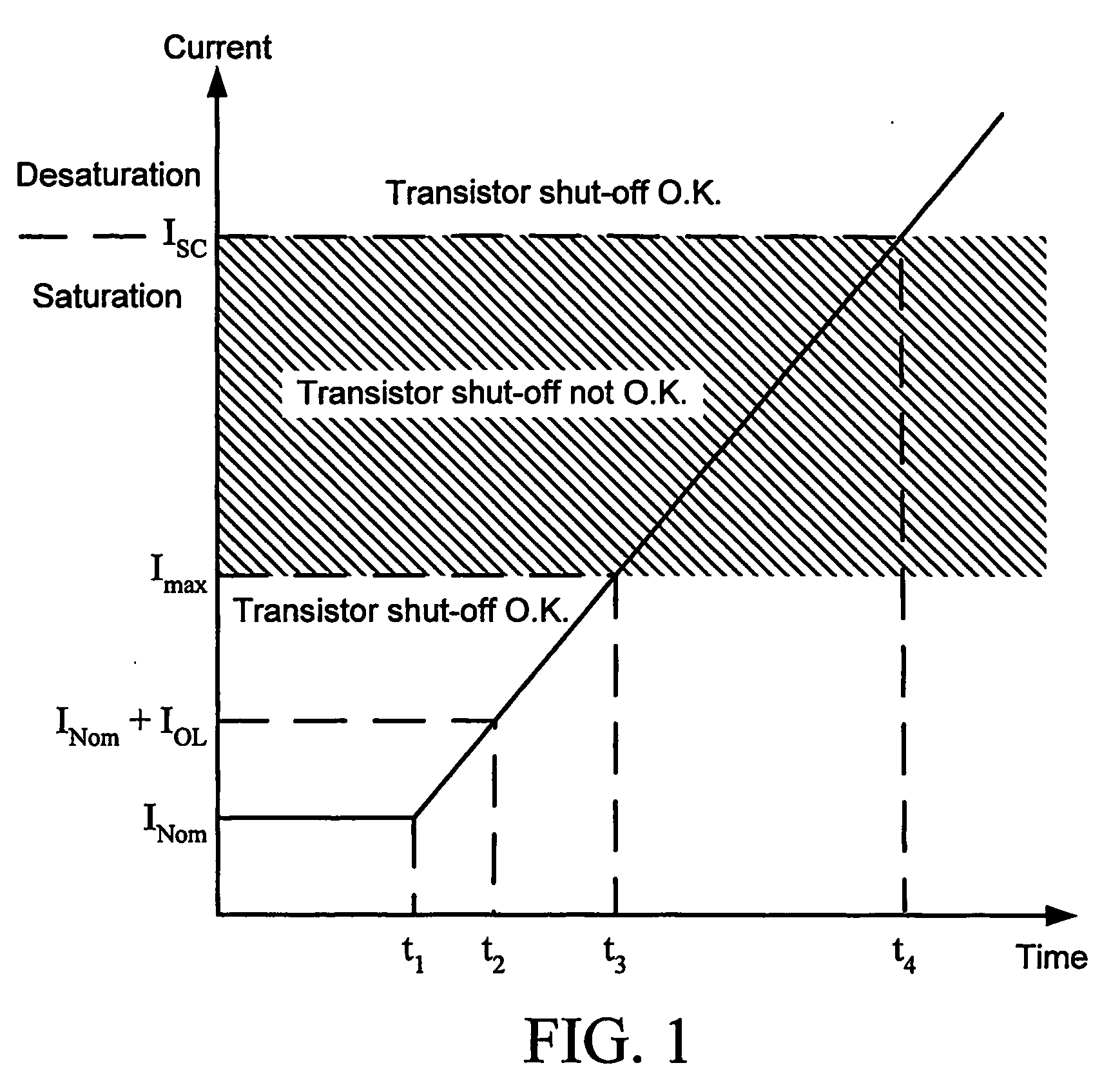Inverter bridge short-circuit protection scheme
a short-circuit protection and inverter bridge technology, applied in emergency protective arrangements for limiting excess voltage/current, dc-ac conversion without reversal, dc source parallel operation, etc., can solve the problems of voltage spike, igbt destruction, and current through igbt rising slowly
- Summary
- Abstract
- Description
- Claims
- Application Information
AI Technical Summary
Benefits of technology
Problems solved by technology
Method used
Image
Examples
Embodiment Construction
[0057] In the present disclosure, in the context of switching, the terms “on-state,”“conducting,” and “closed” are interchangeable, as are the terms “off-state,”“non-conducting,” and “open”.
[0058] An aspect of the invention is using IGBTs having lower transconductance values (gm) for the outer switches relative to the transconductance values of the inner switches. By using lower transconductance IGBTs for the outer switches, the outer switches will always desaturate before the inner switches, even when equivalent +VGE levels and ordinary inverter bridge controllers are used.
[0059] Several techniques are known in the art for determining transconductance. For example, with IGBTs, an easy way to screen for the transconductance of each IGBT is by measuring the collector-to-emitter voltage drop at rated IGBT current and with +VGE equal to 15V. Another way to screen for transconductance is to create a short-circuit Type I fault and measure the current though the switch: the higher the t...
PUM
 Login to View More
Login to View More Abstract
Description
Claims
Application Information
 Login to View More
Login to View More - R&D
- Intellectual Property
- Life Sciences
- Materials
- Tech Scout
- Unparalleled Data Quality
- Higher Quality Content
- 60% Fewer Hallucinations
Browse by: Latest US Patents, China's latest patents, Technical Efficacy Thesaurus, Application Domain, Technology Topic, Popular Technical Reports.
© 2025 PatSnap. All rights reserved.Legal|Privacy policy|Modern Slavery Act Transparency Statement|Sitemap|About US| Contact US: help@patsnap.com



